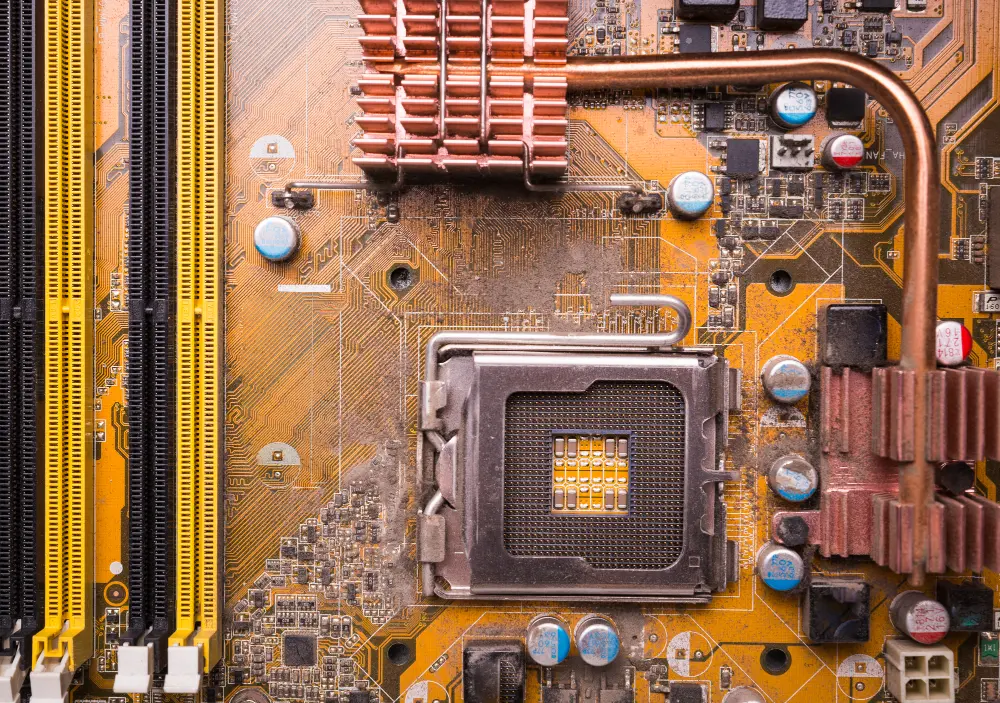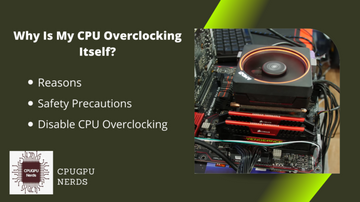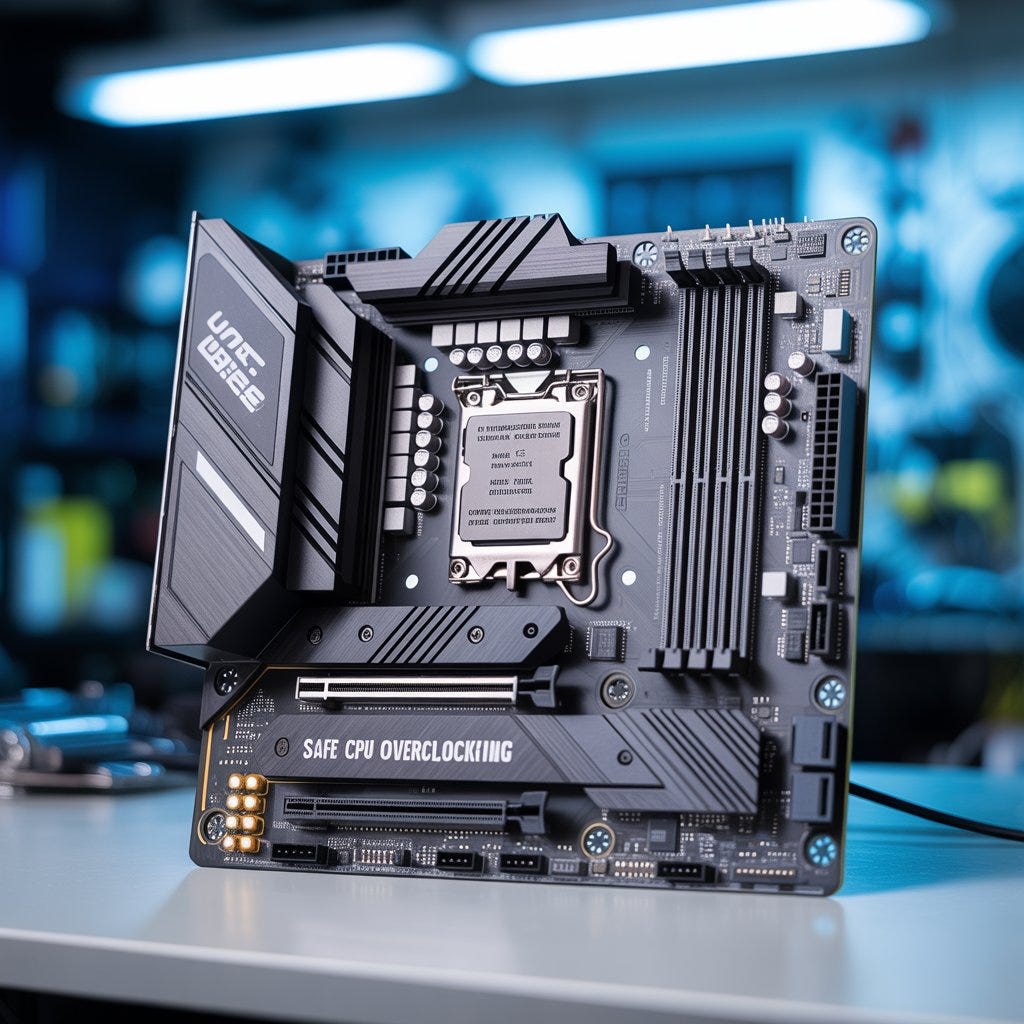Have you ever wondered if your motherboard can handle overclocking? This is a question that puzzles many tech enthusiasts and gamers like you.
Overclocking can boost your computer’s performance, giving you the speed and power you crave. But not all motherboards are up to the task. Understanding whether your motherboard supports overclocking is essential before you dive into this exciting tweak. Imagine the thrill of pushing your system to its limits, unlocking new levels of performance.
You’ll want to ensure you’re equipped with the right knowledge to avoid any potential pitfalls. Read on to discover if your motherboard is ready to take on the challenge and how you can make the most out of your PC setup.

Credit: techie-show.com
Basics Of Overclocking
Overclocking is a way to make your computer’s parts run faster than their normal speed. Many people do this to get better performance from their system.
Before overclocking, it is important to check if your motherboard supports it. Not all motherboards allow overclocking.
What Is Overclocking
Overclocking means increasing the speed of your computer’s processor or memory. This helps the computer work faster than the factory settings.
It is done by changing settings in the motherboard’s BIOS or using special software. Overclocking pushes the hardware beyond its normal limits.
Benefits And Risks
Overclocking can make your computer faster. This helps with tasks like gaming, video editing, and running programs quickly.
There are risks too. Overclocking can cause your computer to get very hot and may damage parts if not done carefully.
- Benefits:
- Improves computer speed and performance
- Can make programs run smoother
- Useful for demanding tasks
- Risks:
- Increases heat inside the computer
- May shorten hardware life
- Can cause system crashes or errors
Key Motherboard Features
Overclocking can make your computer run faster than normal. Not all motherboards support overclocking. You need to check some key features first.
This guide explains important motherboard features that affect overclocking. Knowing these helps you pick the right board.
Chipset Compatibility
The chipset controls communication between the CPU and other parts. Some chipsets allow overclocking, others do not.
Intel and AMD use different chipsets. For Intel, look for Z-series chipsets. For AMD, B550 or X570 are good choices.
- Intel Z-series chipsets support overclocking
- AMD B550 and X570 chipsets allow overclocking
- Entry-level chipsets usually block overclocking
Bios Options
BIOS is the system software on the motherboard. It lets you change settings like CPU speed and voltage.
A good BIOS for overclocking offers many settings. You can adjust CPU frequency, memory timings, and power limits easily.
- Adjust CPU multiplier and base clock
- Set the voltage for CPU and RAM
- Save custom profiles for different setups
- Monitor system temperatures and voltages
Power Delivery System
Power delivery supplies electricity to the CPU. A strong system keeps your CPU stable during overclocking.
Look for motherboards with good VRMs (Voltage Regulator Modules). More VRM phases mean smoother power flow.
- High-quality VRMs reduce power loss
- More power phases give better stability
- Good cooling on VRMs prevents overheating
Checking Your Motherboard Model
Before you start overclocking, you need to know if your motherboard supports it. The first step is to check your motherboard model. This helps you find the right information about its features.
Knowing your motherboard model lets you look up official details. These details tell you if overclocking is possible and what limits exist.
Finding Model Information
You can find your motherboard model in several places. Look on the motherboard itself for a printed model number. It is usually near the CPU socket or RAM slots.
If you cannot open your computer, use software tools. Programs like CPU-Z can show your motherboard model from inside Windows.
- Check the motherboard surface for the model name and number
- Look in your computer manual or box
- Use system information tools like CPU-Z or Speccy
Researching Manufacturer Specs
Once you have the model, visit the manufacturer’s website. Find the product page for your motherboard model. This page shows full specifications.
Look for terms like “overclocking support” or “CPU multiplier unlock.” Some motherboards have special chipsets for overclocking. Also, check the BIOS features for overclocking options.
- Visit the official website of the motherboard maker
- Search for your motherboard model on their support page
- Read the product specifications and manual
- Check for chipset details and BIOS features
- Look for user guides or forums for practical advice
CPU and RAM Considerations
Overclocking your system can improve performance. Your motherboard plays a key role in this process.
It is important to check if your motherboard supports CPU and RAM overclocking. This guide explains these points.
Supported Processors
Not all motherboards support all CPUs for overclocking. Some chipsets limit which processors can be overclocked.
Intel and AMD have different rules for overclocking. Make sure your CPU and motherboard are compatible.
- Intel boards with Z-series chipsets allow CPU overclocking.
- AMD boards with B-series or X-series chipsets support overclocking.
- Entry-level chipsets often block CPU overclocking.
- Check your motherboard manual for supported CPUs.
Memory Overclocking Support
Motherboards differ in how they handle RAM overclocking. Some offer more control over memory speeds and timings.
Good memory overclocking support helps improve system speed and responsiveness.
- Look for XMP (Extreme Memory Profile) support to easily overclock RAM.
- High-end motherboards often have more RAM voltage and timing options.
- Check maximum supported memory speed in your motherboard specs.
- Not all RAM modules will overclock well on every motherboard.
Tools To Verify Overclocking Support
Before trying to overclock your computer, check if your motherboard supports it. Some motherboards allow overclocking, while others do not.
You can use different tools to find out if overclocking is possible with your motherboard. These tools make it easy to verify support.
Software Utilities
Software utilities can scan your system and show motherboard details. They help you see if your motherboard supports overclocking features.
Popular tools include CPU-Z and HWiNFO. These programs show chipset info and BIOS details related to overclocking.
- CPU-Z displays motherboard model and chipset
- HWiNFO gives detailed system information
- Some tools show if BIOS has overclocking options
Manufacturer Websites
Manufacturer websites have official information about your motherboard model. They list features and overclocking support clearly.
Check your motherboard model page for BIOS updates and specs. Some manufacturers also provide user manuals that explain overclocking options.
- Look for overclocking or performance sections
- Download manuals for detailed BIOS info
- Check BIOS update notes for new overclocking features
Steps To Enable Overclocking
Overclocking your motherboard can increase your computer’s speed. Before starting, make sure your motherboard supports overclocking.
Follow these steps carefully to enable overclocking safely and test your system’s stability.
Accessing Bios Settings
To start overclocking, enter the BIOS settings of your computer. This is where you can change hardware options.
Restart your computer and press the key shown on the screen, like Delete, F2, or F10, to enter BIOS.
- Turn off your PC
- Turn it on and press the BIOS key repeatedly
- Wait for the BIOS menu to appear
Adjusting Clock Speeds
In the BIOS menu, find the section for CPU or overclock settings. It may be under “Advanced” or “Performance.”
Change the CPU multiplier or base clock speed to increase the speed. Make small changes and save your settings.
- Locate CPU frequency or multiplier settings
- Increase clock speed slowly, step by step
- Save changes before exiting BIOS
Testing Stability
After changing clock speeds, boot into your operating system. Run stress tests to check if your system is stable.
If your computer crashes or freezes, return to BIOS and lower the clock speeds. Repeat until stable.
- Use stress testing software like Prime95 or AIDA64
- Run tests for at least 30 minutes
- Watch for errors or system crashes
- Adjust clock speeds if needed
Cooling Solutions For Overclocking
Overclocking your motherboard increases heat output. Good cooling keeps your system stable. Choosing the right cooling helps protect your parts.
There are two main cooling types for overclocking. Each has its own benefits and costs. Let’s look at air cooling and liquid cooling options.
Air Cooling
Air cooling uses fans and heat sinks to move heat away from the CPU. It is simple and usually cheaper than liquid cooling. Many motherboards support good air coolers.
Good airflow inside your case is important. You need intake and exhaust fans to push hot air out. Air coolers work well for mild to moderate overclocking.
- Easy to install and maintain
- Less expensive than liquid cooling
- Works well with standard motherboards
- It can be noisy with high fan speeds
Liquid Cooling Options
Liquid cooling uses water or coolant to transfer heat. It cools the CPU more efficiently than air cooling. This helps with higher overclocking speeds.
There are two types: all-in-one (AIO) units and custom loops. AIOs are easy to install. Custom loops require more skills but are more effective. Make sure your motherboard supports the pump and fan headers.
- Better cooling performance for high overclocking
- Quieter operation than air cooling
- Requires more maintenance
- More expensive and complex setup

Credit: softwareg.com.au
Troubleshooting Overclocking Issues
Overclocking your motherboard can improve your system’s speed. Sometimes, problems happen during this process. Troubleshooting helps fix these issues and keep your PC stable.
Knowing how to identify and resolve common overclocking issues is crucial. This guide will help you understand and fix basic issues.
Common Problems
Overclocking can cause your computer to become unstable or crash. Some common problems include system freezes, blue screens, and failure to start.
Other issues are overheating and unexpected shutdowns. These happen when your CPU or motherboard gets too hot.
- System crashes or blue screens
- The computer fails to boot
- Unexpected shutdowns
- Overheating of the CPU or the motherboard
- Performance is worse than before
These problems often mean your overclock settings are too high or unstable. Adjusting or resetting your settings usually helps.
Resetting Bios
If your computer does not start after overclocking, reset the BIOS. This returns your motherboard to safe default settings.
You can reset the BIOS by using a jumper on the motherboard or removing the CMOS battery for a few minutes.
- Turn off your PC and unplug it
- Open the case to access the motherboard
- Find the CMOS battery or BIOS reset jumper
- Remove the battery or move the jumper to reset
- Wait 5-10 minutes before replacing the battery or jumper
- Close the case and turn on your PC
After resetting, your BIOS will load the default settings. You can try overclocking again with lower values.
Future-proofing Your Setup
Overclocking your motherboard can improve your computer’s speed. But you need to know if your board supports it. Choosing the right motherboard helps keep your setup strong for years.
Future-proofing means planning so your PC works well with new parts. Overclocking support is one key factor to consider. It lets you boost performance without buying a new system fast.
Upgrading Components
Your motherboard limits the parts you can add or upgrade. If it supports overclocking, you can improve your CPU and RAM speeds. This helps your computer stay fast as software demands grow.
Look for motherboards with solid power delivery and cooling features. These help handle higher speeds safely. Check if your board supports faster memory and newer CPUs.
- Supports higher RAM speeds for better multitasking
- Compatible with newer CPU models for upgrades
- Good cooling options to prevent overheating
- Strong power phases for stable overclocking
Monitoring Performance
After overclocking, watch your PC’s performance closely. Use software tools to check CPU temperature, speed, and stability. This prevents damage and helps keep your system reliable.
Regular checks catch problems early. If temperatures get too high, lower the clock speeds. Monitoring helps you balance speed with safety for long-lasting use.
- Track CPU and motherboard temperatures
- Check system stability with stress tests
- Use BIOS or software for real-time monitoring
- Adjust settings if hardware shows stress signs

Credit: medium.com
Frequently Asked Questions
How To Check If My Motherboard Supports Overclocking?
Check your motherboard’s model on the manufacturer’s website. Look for features like unlocked BIOS or chipset support for overclocking. Popular chipsets like Intel Z-series or AMD B-series usually support overclocking.
Which Chipsets Allow Motherboard Overclocking?
Intel Z-series (e. g. , Z390, Z590) and AMD B350, B450, X570 chipsets support overclocking. These chipsets have unlocked BIOS options to tweak CPU and memory speeds for better performance.
Can I Overclock Without A Compatible Motherboard?
No, overclocking requires motherboard support. Without it, BIOS won’t allow frequency or voltage adjustments. Using an incompatible motherboard can cause system instability or hardware damage.
Does BIOS Unlock Affect Overclocking Ability?
Yes, an unlocked BIOS is essential for overclocking. It allows you to change CPU multipliers and voltages. Locked BIOS versions prevent any overclocking changes.
Conclusion
Knowing if your motherboard supports overclocking helps you plan upgrades well. Check your motherboard model and its specifications carefully. Some boards allow overclocking, while others do not. Remember, overclocking can increase heat and power use. Always use good cooling and stable power supplies.
Testing settings slowly keeps your system safe. Understanding your hardware limits prevents damage and improves performance. Take time to learn before changing clock speeds. Your computer will thank you with better stability and speed.
